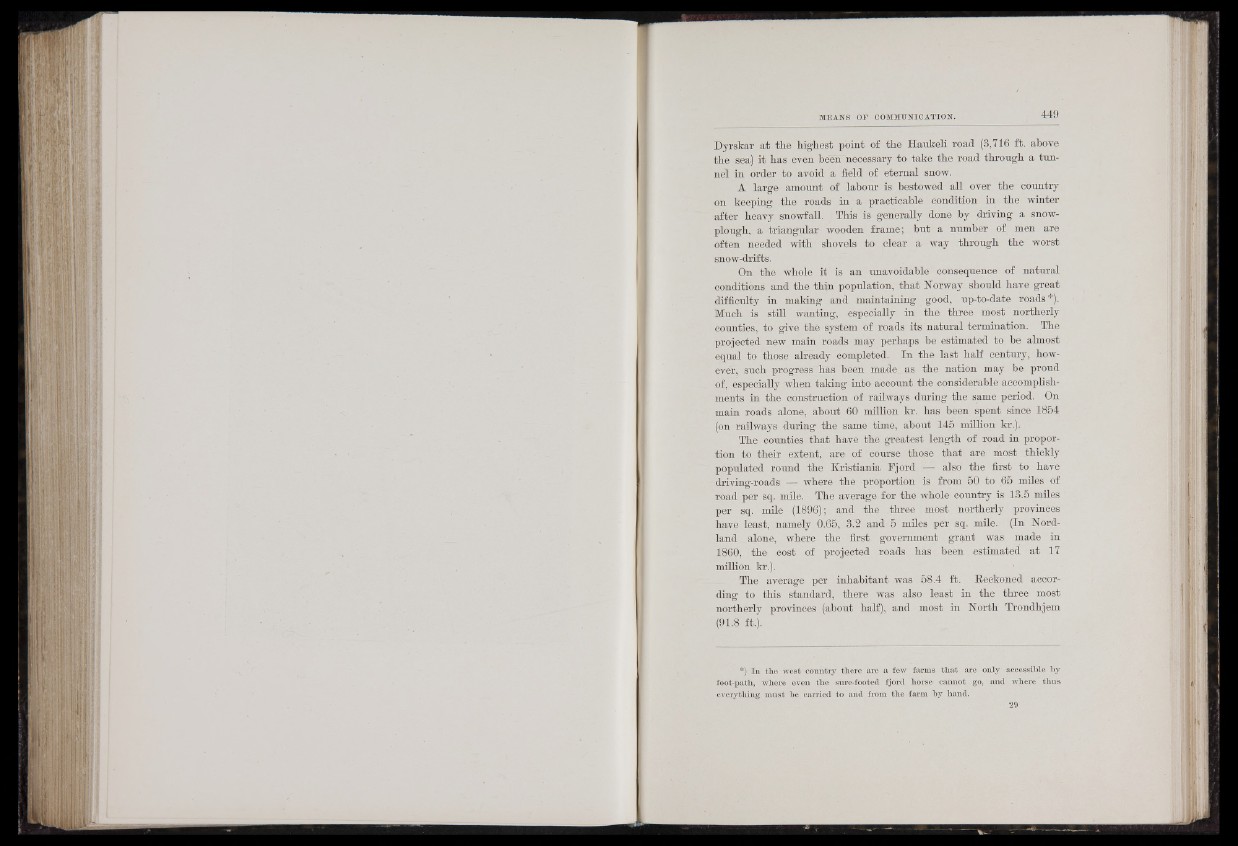
Dyrskar at the highest point of the Haukeli road (3,716 ft. above
the sea) it has even been necessary to take the road through a tunnel
in order to avoid a field of eternal snow.
A large amount of labour is bestowed all over the country
on keeping the roads in a practicable condition in the winter
after heavy snowfall. This is generally done by driving a snowplough,
a triangular wooden frame; but a number of men are
often needed with shovels to clear a way through the worst
snow-drifts.
On the whole it is an unavoidable consequence of natural
conditions and the thin population, that Norway should have great
difficulty in making and maintaining good, up-to-date roads *).
Much is still wanting, especially in the three most northerly
counties, to give the system of roads its natural termination. The
projected new main roads may perhaps be estimated to be almost
equal to those already completed. In the last half century, however,
such progress has been made as the nation may be proud
of, especially when taking into account the considerable accomplishments
in the construction of railways during the same period. On
main roads alone, about 60 million kr. has been spent since 1854
(on railways during the same time, about 145 million kr.).
The counties that have the greatest length of road in proportion
to their extent, are of course those that are most thickly
populated round the Kristiania Fjord — also the first to have
driving-roads — where the proportion is from 50 to 65 miles of
road per sq. mile. The average for the whole country is 13.5 miles
per sq. mile (1896); and the three most northerly provinces
have least, namely 0.65, 3.2 and 5 miles per sq. mile. (In Nord-
land alone, where the first government grant was made in
1860, the cost of projected roads has been estimated at 17
million kr.)||f|
The average per inhabitant was 58.4 ft. Reckoned according
to this standard, there was also least in the three most
northerly provinces (about half), and most in North Trondhjem
(91.8 ft.).
•) In tlie west country there are a few farms th a t are only accessible by
foot-path, where even the sure-footed fjord horse cannot go, and where thus
everything must be carried to and from the farm by hand.